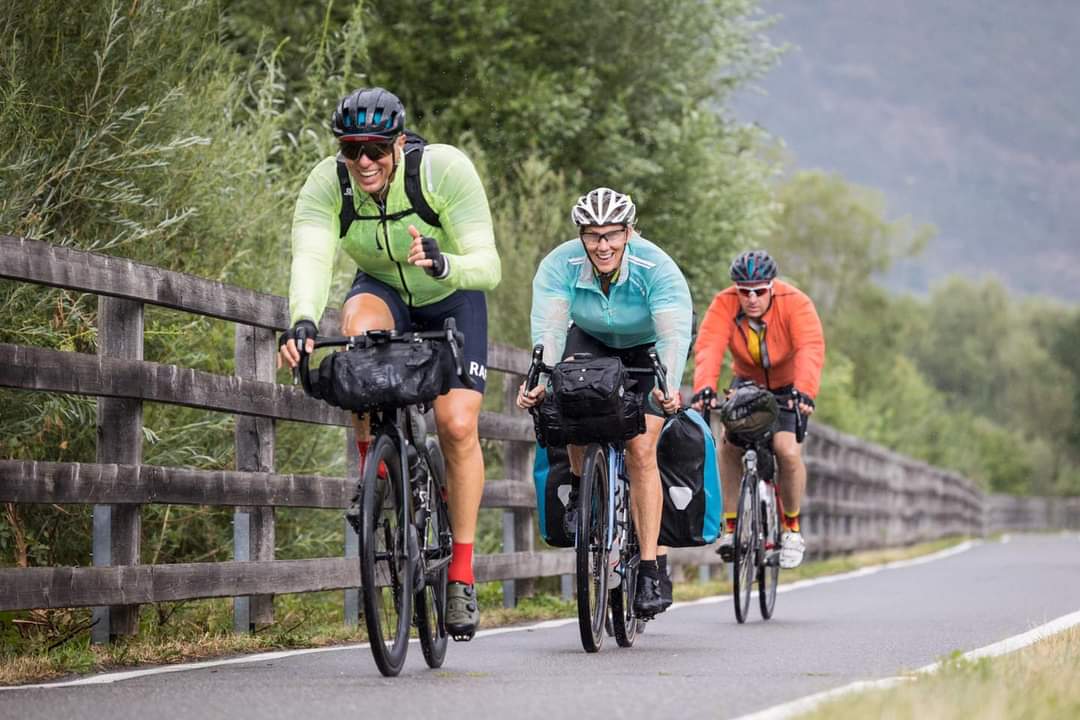How much should I drink during an ultra endurance cycling event?

Staying hydrated is an important key to success in ultra distance cycling; when dehydrated our speed slows, we make poor decisions and we can fatigue very quickly, losing us valuable time and possibly compromising the event altogether.
How much should I drink?
People generally find they need somewhere between 300ml (10fl oz) and 1000ml (27fl oz) of fluid per hour of riding. This is a large range because everyone's hydration needs are slightly different depending on our size, sex sweat rate and how hard we are working.
In addition, our own needs can vary depending on how hot and humid the conditions are. Menstruating women may have more need for electrolytes during the luteal phase of the menstrual cycle when blood plasma is thicker and salt content lower.
They key is to be your own personal scientist and find out what you need. Good ways to do this are:
- Find out if you are a particularly salty sweater.
- Find out how much you sweat when cycling at your ultra endurance pace in various weather conditions you may face in your event.
There are companies that will do a full sweat analysis and provide you with an individual hydration plan, or you can choose to do your own sweat test. The saltiness of your sweat is usually indicated by the amount of salt lines you notice on your body and your clothing after training.
Do a sweat test.
You can do your own sweat test in this way
The equation is: Weight loss (kg)/Time (hrs)
- Before the test make sure that you are generally adequately hydrated (that your wee is normally a light straw colour apart from the first wee of the day).
- To start the test, go to the toilet for a wee.
- Weigh yourself (dried and naked) and make a note of your weight in kg.
- Go for a ride of about an hour in length.
- Do not urinate until after the next step.
- As soon as you return from your ride dry yourself down and weigh yourself again (naked as before).
- If you choose to drink during the session make a note of the weight in kg that you have drunk.
- The weight you lose in kg (plus the weight of any liquid consumed in kg) divided by the time you were training in hours will equate to your sweat rate in litres per hour.
You don't have to do a sweat test, and given the test would only really be accurate for the intensity, terrain and conditions you did the test in it's not an exact science. It can be a useful starting point for some people though.
Sip regularly
Your body can't absorb large volumes of water at once, so it's better to keep taking regular sips to get the maximum absorption.
Sipping regularly also means that you won't have a lot of unwanted water volume sloshing around in your stomach.
If you are a poor drinker then setting an alarm or having a plan to take a sip every 10 to 15 minutes can work well.
Drink at your stops
Drinking when you stop for a meal will help keep your hydration levels topped up - asking for tap water, having soup for a starter and fruit for dessert can all be ways of getting in some liquids. For shorter stops, ice creams, and slushies can also be great ways to get some liquid in.
For long events we are aiming not to fall into too much hydration deficit, whilst accepting that at points we are not going to be at 100% hydration levels as it's impossible to drink that amount while exercising. Having the points above in mind can help.
Subscribe to our blog
Please share with your friends
Other articles you might like
May 29, 2024

Comments